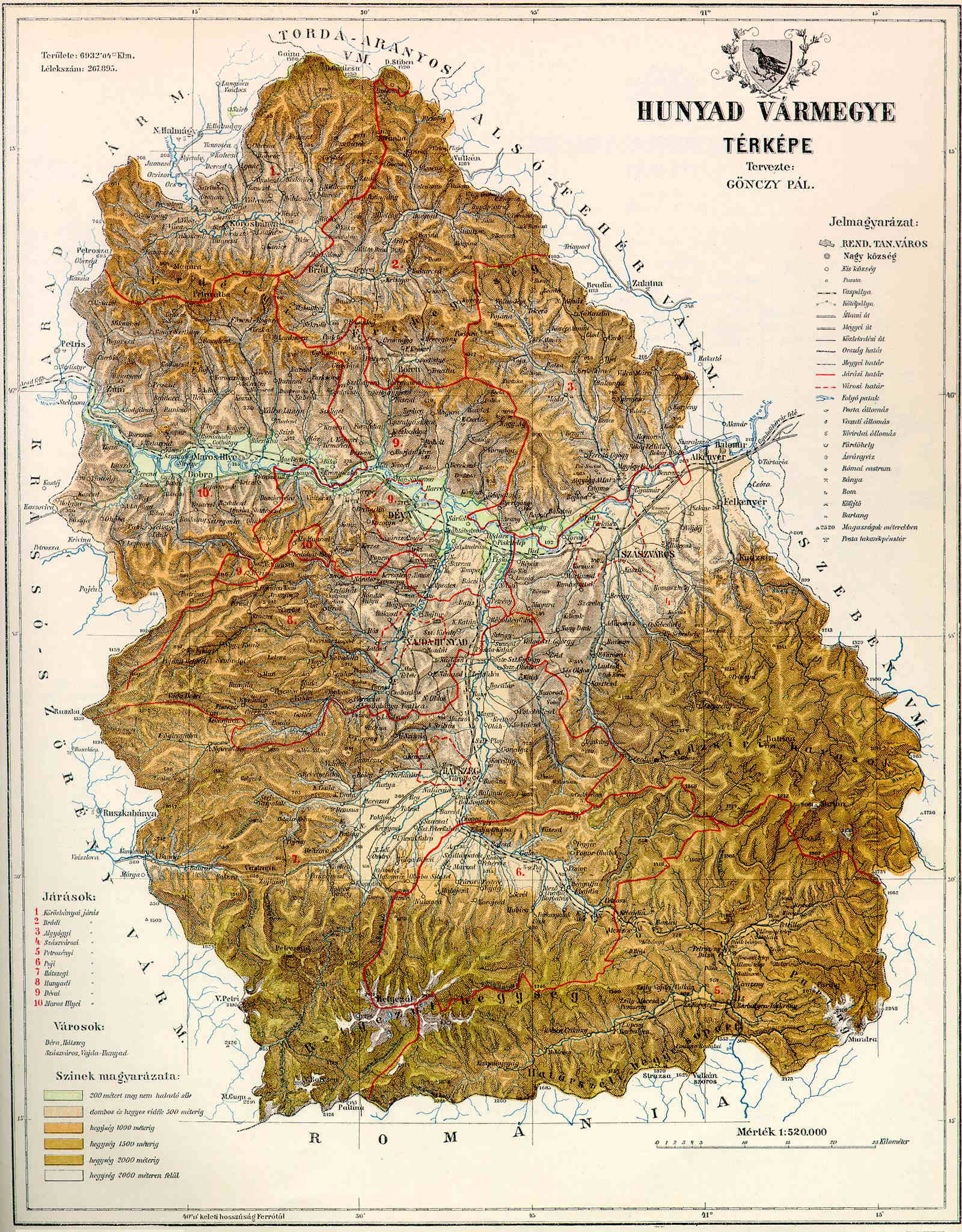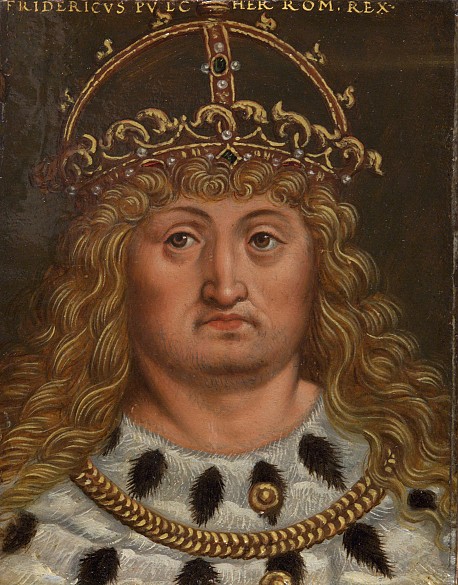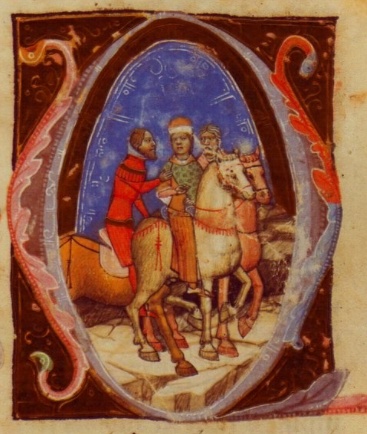|
Lack Hermán
Lack from the kindred Hermán (), also known as Lack of Kerekegyháza (; died 1359) was an influential Hungarian nobleman, who served as Count of the Székelys from 1328 to 1343. He was the eponymous ancestor of the powerful and rich Lackfi family. Ancestry and early life Lack (or Ladislaus) was born into the ''gens'' (clan) Hermán as the son of Denis, whose ancestors are unknown, as a result there is inability to connect the Lackfi branch to the other branches of the clan. According to Simon Kézai's ''Gesta Hunnorum et Hungarorum'', the ancestor of the kindred, knight Herman originated from Nuremberg, who escorted Gisela of Bavaria in 996, who became the wife of Stephen I of Hungary, the future first King of Hungary. Following that Herman received land donations in Vas County. Both ''magister'' Simon and the 14th-century ''Illuminated Chronicle'' described the Hermán kindred as "relatively poor". It is possible that Rubinus, a late-13th-century talented military leader was ... [...More Info...] [...Related Items...] OR: [Wikipedia] [Google] [Baidu] |
Count Of The Székelys
The Count of the Székelys (, ) was the leader of the Hungarian-speaking Székelys in Transylvania, in the medieval Kingdom of Hungary. First mentioned in royal charters of the 13th century, the counts were the highest-ranking royal officials in Székely Land. From around 1320 to the second half of the 15th century, the counts' jurisdiction included four Transylvanian Saxon districts, in addition to the seven Székely Seat (territorial-administrative unit), seats (or administrative units). The counts also held important castles outside the territories under their administration, including their seat at Görgény (now Gurghiu, Mureș, Gurghiu in Romania). They were the supreme commanders of the Székely troops; their military campaigns against Second Bulgarian Empire, Bulgaria and the Golden Horde were mentioned in royal charters and medieval chronicles. The counts presided over the general assemblies of both the individual Székely seats and the entire Székely community. They al ... [...More Info...] [...Related Items...] OR: [Wikipedia] [Google] [Baidu] |
Rubinus Hermán
Rubinus from the kindred Hermán (, also Rubin or Ruben; died after 1283) was a Hungarian soldier and nobleman, who served as Judge royal in 1283, during the reign of Ladislaus IV of Hungary. Family Rubinus was born into the ''gens'' (clan) Hermán as the son of ''comes'' Herman, whose parents are unidentified, as a result there is inability to connect his person to the three known branches of the clan in the genealogy, but his activity and land properties confirmed, he belonged to the kindred's ancient Vas County branch. Rubinus had two brothers, Feldricus and Charles. According to the contemporary Simon of Kéza's ''Gesta Hunnorum et Hungarorum'', the ancestor of the Hermán kindred, knight Herman originated from Nuremberg, who escorted Gisela of Bavaria to Hungary in 996. She became the wife of Stephen I of Hungary, the future first King of Hungary. Following that Herman received land donations in Vas County. Both ''magister'' Simon and the 14th-century ''Illuminated Chronicle ... [...More Info...] [...Related Items...] OR: [Wikipedia] [Google] [Baidu] |
Oligarch (Kingdom Of Hungary)
An oligarch or provincial lord () was a powerful lord who administered huge contiguous territories through usurping royal prerogatives in the Kingdom of Hungary in the late 13th and the early 14th centuries. The term ''petty king'' used to be used as well. List of oligarchs Interregnum (1301–1310) * Amadeus Aba ( Northeast Hungary) * Stephen Ákos ( Borsod) * Stephen Babonić ( Lower Slavonia) * James Borsa ( Transtisia) * Matthew Csák ( Northwest Hungary) * Ugrin Csák ( Upper Syrmia) * Dujam Frankopan ( Primorje) * Ladislaus Kán (Transylvania) * Henry Kőszegi (Southern Transdanubia and Upper Slavonia) * Ivan Kőszegi (Western Transdanubia) * Stephen Dragutin Nemanjić ( Lower Syrmia) * Nicholas Pok ( Szamosköz) * Dominic Rátót ( Nógrád) * Paul Šubić (Croatia and Bosnia Bosnia and Herzegovina, sometimes known as Bosnia-Herzegovina and informally as Bosnia, is a country in Southeast Europe. Situated on the Balkans, Balkan Peninsula, it borders Ser ... [...More Info...] [...Related Items...] OR: [Wikipedia] [Google] [Baidu] |
Buda
Buda (, ) is the part of Budapest, the capital city of Hungary, that lies on the western bank of the Danube. Historically, “Buda” referred only to the royal walled city on Castle Hill (), which was constructed by Béla IV between 1247 and 1249 and subsequently served as the capital of the Kingdom of Hungary from 1361 to 1873. In 1873, Buda was administratively unified with Pest, Hungary, Pest and Óbuda to form modern Budapest. Royal Buda is called the ''Castle Quarter (Budapest), Várnegyed'' () today, while “Buda” ''pars pro toto'' denotes Budapest’s I., II., III., XI., XII. and XXII. districts. This colloquial definition thus includes medieval Óbuda and amounts to a third of the city’s total area, much of it forested. Buda's landmarks include the Royal Palace (Budapest), Royal Palace, Matthias Church, the Citadella, Gellért Baths, the Buda Hills, the Carmelite Monastery of Buda, and the residence of the President of Hungary, Sándor Palace. Etymology Accord ... [...More Info...] [...Related Items...] OR: [Wikipedia] [Google] [Baidu] |
Kerekegyháza
Kerekegyháza is a town in Bács-Kiskun county, in southern Hungary Hungary is a landlocked country in Central Europe. Spanning much of the Pannonian Basin, Carpathian Basin, it is bordered by Slovakia to the north, Ukraine to the northeast, Romania to the east and southeast, Serbia to the south, Croatia and .... References External links * in Hungarian Populated places in Bács-Kiskun County Towns in Hungary {{Bacs-geo-stub ... [...More Info...] [...Related Items...] OR: [Wikipedia] [Google] [Baidu] |
Timișoara
Timișoara (, , ; , also or ; ; ; see #Etymology, other names) is the capital city of Timiș County, Banat, and the main economic, social and cultural center in Western Romania. Located on the Bega (Tisza), Bega River, Timișoara is considered the informal capital city of the historical Banat region. From 1848 to 1860 it was the capital of the Serbian Vojvodina and the Voivodeship of Serbia and Banat of Temeschwar. With 250,849 inhabitants at the 2021 Romanian census, 2021 census, Timișoara is the country's List of cities and towns in Romania, fifth most populous city. It is home to around 400,000 inhabitants in its Timișoara metropolitan area, metropolitan area, while the Timișoara–Arad metropolis concentrates more than 70% of the population of Timiș and Arad County, Arad counties. Timișoara is a multicultural city, home to 21 ethnic groups and 18 religious denominations. Historically, the most numerous were the Banat Swabians, Swabian Germans, Jews and Hungarians, who ... [...More Info...] [...Related Items...] OR: [Wikipedia] [Google] [Baidu] |
Csanád County (medieval)
The Csanád County or Chanad County or () was a county of the Kingdom of the medieval Kingdom of Hungary. It was established after Csanád (the eponymous founder) had defeated Ajtony, and the bishopric of Csanád was founded in the 11th century. History It was established after Magyar nobleman Csanád (the eponymous founder) had defeated Ajtony, who had ruled over the region now known as Banat (in Romania and Serbia). At ''urbs Morisena'', which was given the name of Csanád, a Roman Catholic bishopric was immediately founded, headed by Gerard. By that time Csanád had been baptized and become the head of the royal county ''(comitatus)'' organized around the fortress at Csanád. Since 1526, the county was controlled by the Eastern Hungarian Kingdom. During the Ottoman campaign in 1551-1552, the county was conquered and its territory was incorporated into the newly formed Sanjak of Çanad, within the Temeşvar Eyalet The Province of Temeşvar () was a first-level administr ... [...More Info...] [...Related Items...] OR: [Wikipedia] [Google] [Baidu] |
Hunyad County
Hunyad (today mainly Hunedoara (county), Hunedoara) was an administrative county (Comitatus (Kingdom of Hungary), comitatus) of the Kingdom of Hungary, of the Eastern Hungarian Kingdom and of the Principality of Transylvania (other), Principality of Transylvania. Its territory is now in Romania in Transylvania. The capital of the county was Déva (present-day Deva, Romania, Deva). Geography After 1876, Hunyad county shared borders with Romania and the Hungarian counties Krassó-Szörény, Arad (Hungarian county), Arad, Torda-Aranyos, Alsó-Fehér and Szeben. Its area was 7,809 km2 around 1910. Etymology The toponym Hunyad most likely comes from the Hungarian language, Hungarian verb, meaning 'to close' or 'to die'. According to linguist Géza Kuun, the name may keep the memory of the Huns. History The first known civilization living on the territory were the Scythian culture, Scythian Agathyrsi and Sigynnae. Later the Dacians under their leader Burebista esta ... [...More Info...] [...Related Items...] OR: [Wikipedia] [Google] [Baidu] |
Arad County (former)
Arad County was an administrative unit in the Kingdom of Hungary, the Eastern Hungarian Kingdom and the Principality of Transylvania (1570–1711), Principality of Transylvania. The County (Kingdom of Hungary), county was established along the Mureș (river), Maros (Mureș) River in the 11th or the , but its first head, or ''ispán'', was only mentioned in 1214. Its territory is now part of Romania, except a small area (the town of Elek and the surrounding villages) which is part of Hungary. The capital of the county was Arad, Romania, Arad. Geography The medieval Arad County was situated in the lands along both banks of the Mureș (river), Maros (Mureș) River. The existence of arable lands, pastures, vineyards and orchards in the western lowlands in the Middle Ages is well-documented. The hilly eastern regions were sparsely populated. The total territory of the medieval county was around . In 1744, Arad County absorbed a large part of Zaránd County, including its capital ... [...More Info...] [...Related Items...] OR: [Wikipedia] [Google] [Baidu] |
Ladislaus III Kán
Ladislaus (III) Kán (? – before 13 May 1315) (, ), was a Hungarian oligarchy, oligarch in the Kingdom of Hungary who ruled ''de facto'' independently Transylvania. He held the office of Voivode of Transylvania ''(erdélyi vajda)'' (1295–1314 or 1315). Taking advantage of the internal discords within the kingdom, he could maintain his rule over Transylvania until his death even by struggling against the several claimants for the throne. His life Ladislaus Kán belonged to the Transylvanian branch of the kindred Kán which was founded by Ladislaus' great-grandfather Julius I Kán. There is no information on his early life, but he was one of the three sons of Ladislaus II Kán, Ladislaus II, who held the office of judge royal ''(országbíró)''. His father died in or after 1278 and he inherited his possessions: Valea Lungă, Alba, Hosszúaszó (today ''Valea Lungă'' in Romania), Șona, Szépmező (today ''Șona'' in Romania), Bun (today ''Boiul Mare'' in Romania), Mezőszi ... [...More Info...] [...Related Items...] OR: [Wikipedia] [Google] [Baidu] |
Frederick The Fair
Frederick the Fair () or the Handsome ( – 13 January 1330), from the House of Habsburg, was the duke of Austria and Styria from 1308 as well as the anti-king of Germany from 1314 until 1325 and then co-king until his death. Background Frederick was born in Vienna, the second son of King Albert I of Germany by his wife Elisabeth of Gorizia-Tyrol, a scion of the Meinhardiner dynasty, and thereby a grandson of the first Habsburg king of Germany Rudolph I. Duke of Austria Still a minor, he and his elder brother Rudolph III had been vested with the duchies of Austria and Styria by their father in 1298. Upon Rudolph's early death in 1307 and the assassination of his father in 1308, he became the ruler of the Austrian and Styrian duchies on behalf of himself and his younger brothers. The royal title held by his father and grandfather however passed to Count Henry VII of Luxembourg, who was elected by six of seven votes, contrived by the mighty Archchancellor Peter of Aspelt, e ... [...More Info...] [...Related Items...] OR: [Wikipedia] [Google] [Baidu] |
Charles I Of Hungary
Charles I, also known as Charles Robert (; ; ; 128816 July 1342), was King of Hungary and Croatia in the union with Hungary, Croatia from 1308 to his death. He was a member of the Capetian House of Anjou and the only son of Charles Martel of Anjou, Charles Martel, Prince of Salerno. His father was the eldest son of Charles II of Naples and Mary of Hungary, Queen of Naples, Mary of Hungary. Mary laid claim to Hungary after her brother, Ladislaus IV of Hungary, died in 1290, but the Hungarian prelates and lords elected her cousin, Andrew III of Hungary, Andrew III, king. Instead of abandoning her claim to Hungary, she transferred it to her son, Charles Martel, and after his death in 1295, to her grandson, Charles. On the other hand, her husband, Charles II of Naples, made their third son, Robert the Wise, Robert, heir to the Kingdom of Naples, thus disinheriting Charles. Charles came to the Kingdom of Hungary upon the invitation of an influential Croatian lord, Paul I Šubić of ... [...More Info...] [...Related Items...] OR: [Wikipedia] [Google] [Baidu] |









